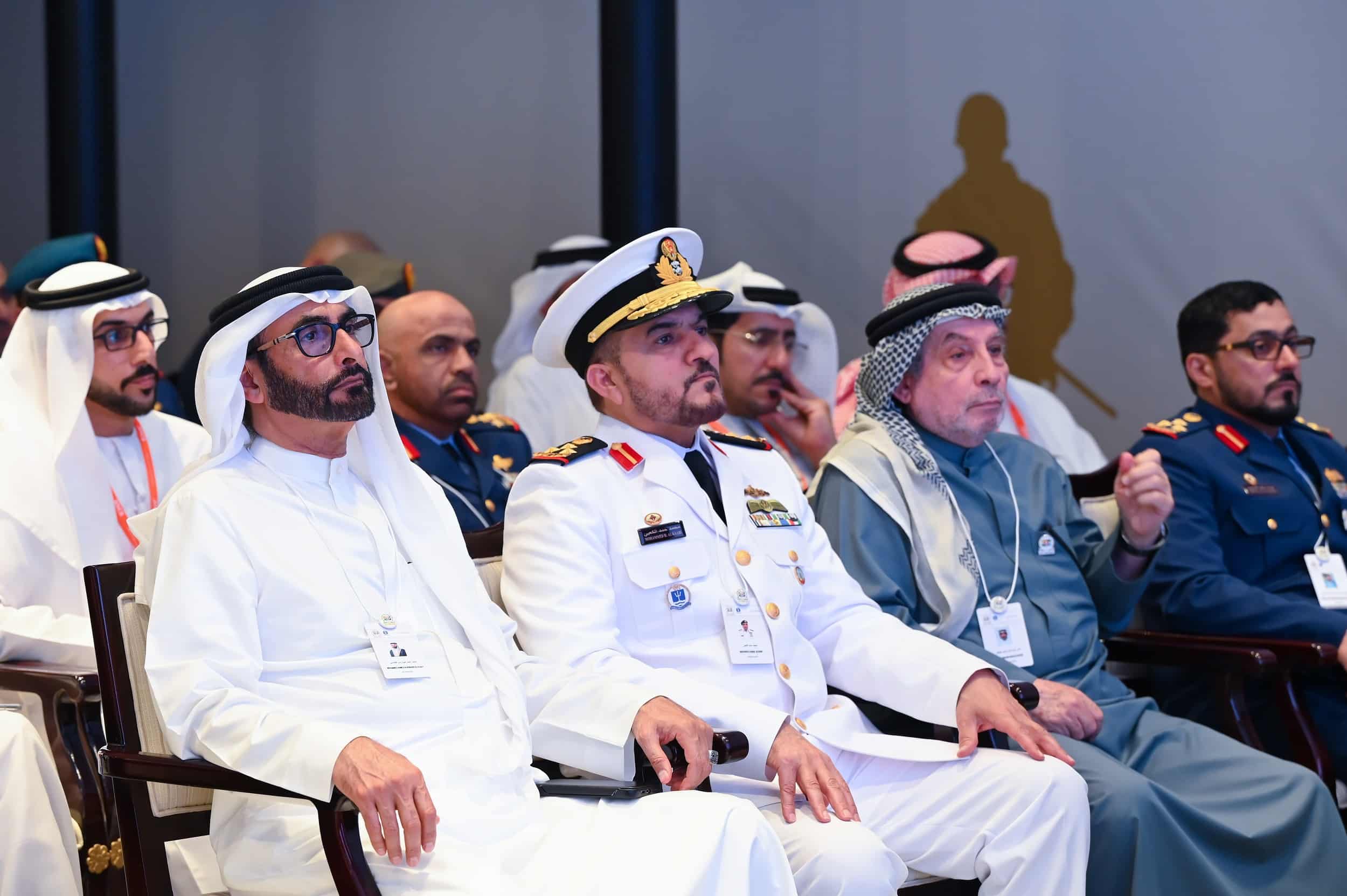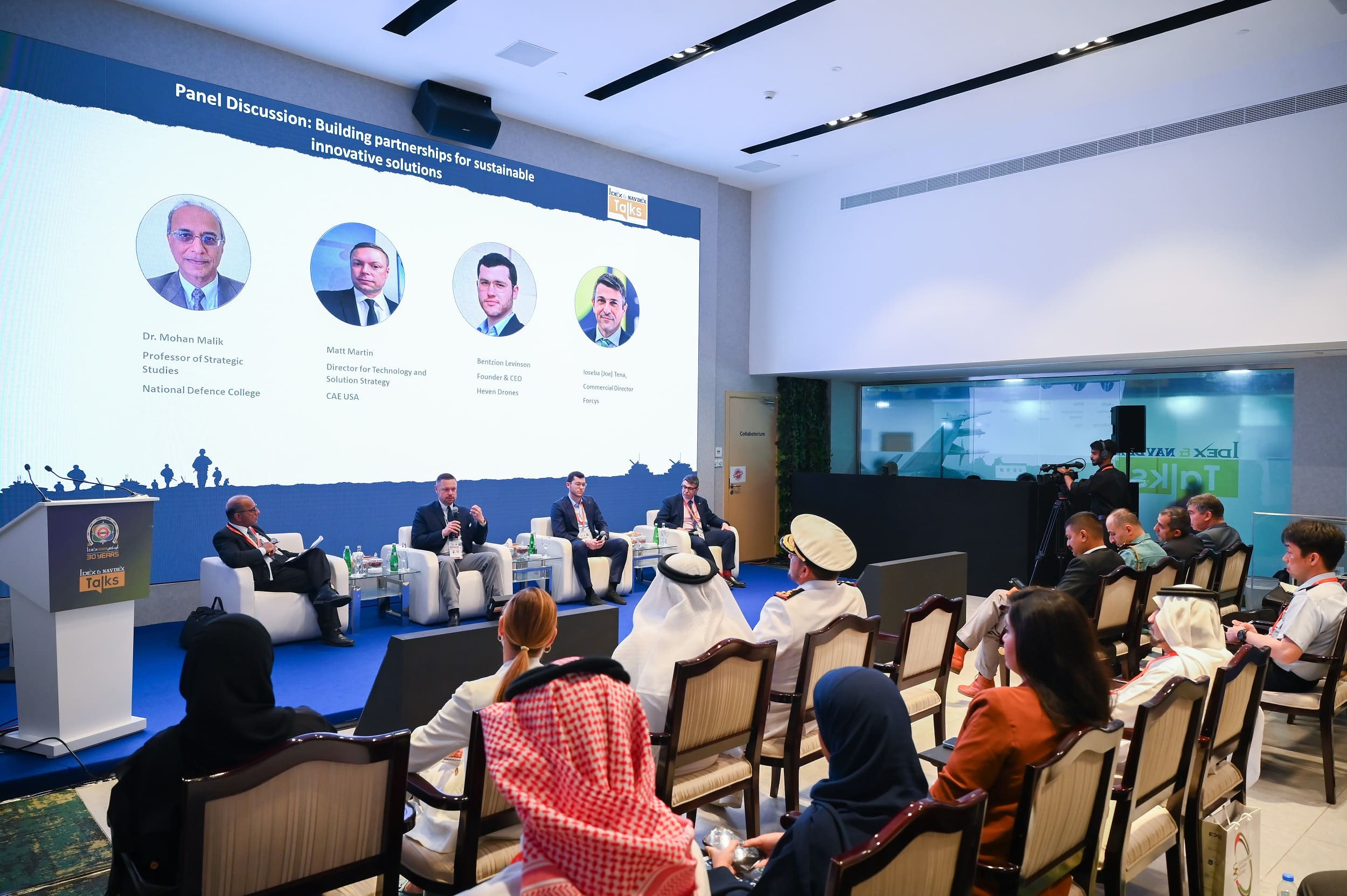Abu Dhabi, UAE, 24 February 2023: IDEX and NAVDEX Talks, which were held over 3 days for the first time at the IDEX and NAVDEX exhibitions under the patronage of His Highness Sheikh Mohamed bin Zayed Al Nahyan, President of the UAE, concluded their sessions. The last day included 6 sessions that brought together thought leaders, policy makers and world-renowned experts.
One of the last sessions of IDEX and NAVDEX talks was attended by His Excellency Mohammed bin Ahmed Al Bowardi, UAE’s Minister of State for Defence Affairs, in addition to a number of VIPs and high-level officials.

During the first session, titled “Security and the emergence of new dimensions: Web3.0, Metaverse, Deepfakes, Misinformation, and beyond”, Professor Martin Spraggon, Keynote Speaker and Author, said: “Web 3.0 applications use a decentralised blockchain that lacks formal authority to control what happens on Web 3.0. This poses major security challenges as it means that users lack protection. Another distinguishing feature of Web 3.0 is the Semantic Web, which concerns artificial intelligence and machine learning that are completely connected. This also brings many security concerns, particularly when it comes to misinformation or deepfakes.”
“Web 3.0 and the Metaverse are disrupting the world significantly. Everything in our lives is changing and will continue to change. This is just the beginning, and there are already concerning implications. Therefore, it is essential that we recognise this and be prepared for whatever is to come,” he added.
During the session titled, “The human experience of an increasingly digital battlespace” Dr. John Hardy, Assistant Dean for Graduate Studies at Rabdan Academy said: “When it comes to the human experience of the battlefield, one of the most important elements is the proximity to targets. We have some significant implications for decision making, depending on the perspective that we take on the battlefield.”
“One of the challenges we have is that we tend to get tunnel vision so we started to focus on the things that we can see, things not produced by the techs, and all the things which are difficult to detect with different types of data systems. In addition, we have a whole range of different new types of non-sensory data, and that could be different kinds of digital information, some of which didn’t exist 20 years ago, some of which don’t exist now,” Dr.Hardy added.

During the third session, titled “Building partnerships for sustainable innovative solutions”, Matt Martin, Director of Technology and Solution Strategy at CAE in the USA, said: “At CAE, we have established partnerships with governments, small companies, universities and academic institutions, which enable us to have access to cutting-edge technology to solve complex military challenges. In addition, the key for our success is the connection to military professionals, which supports us in ensuring that we meet their needs whenever we are developing new technologies. It is essential for us to integrate military professionals into rapid development cycles, to obtain their feedback in real-time and utilise it in our processes to create our technologies.”
Bentzion Levinson, Founder and CEO of Heven Drones, said: “As a small company, partnerships and collaboration are key to our success, particularly B2B partnerships as they pave the way for us to develop innovative technologies based on our customers’ needs.”
Ioseba (Joe) Tena, Commercial Director of Forcys, added: “At Forcys, we work on implementing commercial technology within the defence sector. I believe that continuous experimentation and working alongside the customer to develop our technologies is very important for us to succeed, differentiate our offerings and stay ahead of our competitors.”

During the session titled, “Formulating a National Security Strategy using Quantum Science and Technology”, Dr. Patrick Bell, Assistant Professor at the National Defense College, said: “Nations must confront challenges that are increasingly emerging and that cannot be planned for effectively with a classic strategy. These include climate change, the COVID-19 pandemic, digital disinformation, or natural disasters, such as the recent earthquake in Turkey for example. Using a quantum strategy, nations can leverage the inherent uncertainty of current geopolitical competition and transform threats and challenges into opportunities using quantum game theory and simulation. By employing quantum technologies, we can assist decision-makers with assessing various scenarios. This is how we can move from firefighting to finding solutions.”

During the session titled, “IoMT for strengthening military forces in the era of all-to-all” Jay Edwards, PwC Middle East Defense Partner at PwC said: “There are huge opportunities to automate and improve processes across a number of sectors. With the increased military capabilities, military forces are eager to adopt technologies and tools that can help them achieve information superiority.”
“In the future, military combat will be powered by a network of sensors, wearables, and IoT that uses cloud edge computing to create a cohesive fighting force. The advantage that will be gained from this is the ability to integrate a huge amount of data and use AI to process it in real time on the battlefield, to ensure all decisions are relayed to frontline personnel as quickly as possible,” he added.
During the sixth session titled, “Drones challenging the future”, Professor Dr. Gert-René Polli said: “I strongly believe that adapted and specialized UAVs will increasingly become an indispensable tool for law enforcement, as well as for the intelligence community who will start using these technologies on the operational level and on a tactical level. The deployment of UAVs for the purpose of transportation and logistics solutions is something that is new and has the potential to grow in this market. This technology has the potential to grow and challenge our current logistics.”




























